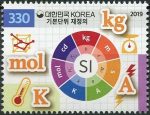(Explore the history and landscape of the United States with us as we approach the 250th anniversary of the American Revolution and American Independence. Get out your homeschool atlas and almanac and follow along!)
Kansas is our homeschool state-of-the-week, so why not spend a few minutes today with your students learning about one of Kansas’ most important historic places: Tallgrass Prairie National Preserve, which protects one of the last remaining sections of the original American prairies.
![[Homeschool American Heritage]](https://upload.wikimedia.org/wikipedia/commons/thumb/e/e3/Sunset_falls_across_the_beautiful_Flint_Hills_%28f0f6c731-1dd8-b71b-0b88-d326127c9973%29.jpg/1024px-Sunset_falls_across_the_beautiful_Flint_Hills_%28f0f6c731-1dd8-b71b-0b88-d326127c9973%29.jpg)
“Tallgrass Prairie National Preserve, established November 12, 1996, is the only unit of the National Park System dedicated to the rich natural and cultural history of the tallgrass prairie ecosystem. This 10,894 acre portion of the once vast tallgrass prairie is being preserved as a critical resource for the benefit, education, and enjoyment of this and future generations.”
Tallgrass prairie once covered more than 170 million acres of the United States, from Indiana to Kansas and from Canada to Texas. Nearly all of it is gone, plowed under for agriculture or urban development. An ancient past survives in the irreplaceable Flint Hills tallgrass. It takes all season for the grasses to reach their maximum heights. The phrase “Tall in the Fall” is one to remember when visiting the preserve. Like everything in nature, they start out small. By early October the grasses reach their limits and turn golden brown.
This sea of grass was once a shallow sea of water. Between 200 and 300 million years ago, the gray and white limestone and steel tough flint began to form on the Permian Sea floor. The resulting Flint Hills geology was too shallow and rocky for plowing but excellent for pasture. The natural prairie cycle of weather, fires and animal grazing has sustained the diverse tallgrass ecosystem ever since.
The list of local species found include over 500 plants, nearly 150 birds, 39 reptiles and amphibians, and 31 mammals. The threatened and endangered Topeka Shiner is a minnow that dwells here and in other prairie streams. Much of the prairie flora and fauna are too small to see from a passing car. Take the time to stop and look closer. A subtle world of special beauty and natural wonder is waiting. (nps.gov)
You can find a wealth of additional information about the Preserve’s history, landscape, location(s), and visitor facilities on the webpage for Tallgrass Prairie National Preserve from the National Park Service, and also on the Preserve’s page on Wikipedia.
![[Homeschool American Heritage]](https://upload.wikimedia.org/wikipedia/commons/thumb/f/f7/2014_10_08_Colorado_Oct_2014_0789.JPG/1024px-2014_10_08_Colorado_Oct_2014_0789.JPG)
Explore America’s National Parks, National Historical Parks, National Historic Sites, National Monuments, and more via Wikipedia and via the U.S. National Park Service’s website today.
What historical American treasures are you and your students exploring in your homeschool this Leo Term? 🇺🇸
❡ The great globe itself: This is one of our regular Homeschool Geography posts featuring important natural and historical sites in the United States. Print your own copy of our River Houses American Heritage Calendar and follow along with us, and add your name to our weekly mailing list to get great homeschool teaching ideas delivered right to your mailbox all through the year. 🌎
❡ We set to-day a votive stone: If you want a great long-term history and geography project for your homeschool, explore the Historical Marker Database online (hmdb.org) and make a plan to find all the markers that are listed in your local area. Add any new ones you know of that are missing, and add new photos or descriptions for the ones already included. Your students will gain a better appreciation for your local community and will learn a wealth of new information about history and geography. 🏛
❡ Print this little lesson: Down at the bottom of this post you’ll find a special “Print” button that will let you create a neat and easy-to-read copy of this little lesson, and it will even let you edit and delete sections you don’t want or need (such as individual images or footnotes). Give it a try today! 🖨
❡ Books in the running brooks: You can always turn to your River Houses atlas and almanac for more information about any of our homeschool states-of-the-week. The almanac has detailed profiles of all the U.S. states and territories, and the endpapers of the atlas are indexes that will show you where all of the individual national and regional maps may be found. 📚
❡ Homeschool calendars: We have a whole collection of free, printable, educational homeschool calendars and planners available on our main River Houses calendar page. They will help you create a light and easy structure for your homeschool year. Give them a try today! 🗓
❡ Support our work: If you enjoy our educational materials, please support us by starting your regular Amazon shopping from our very own homeschool teaching supplies page. When you click through from our page, any purchase you make earns us a small commission at no extra cost to you. Thank you for helping us to keep going and growing! 🛒
❡ Join us! The aim of the River Houses project is to create a network of friendly local homeschool support groups — local chapters that we call “Houses.” Our first at-large chapter, Headwaters House, is now forming and is open to homeschoolers everywhere. Find out how to become one of our founding members on the Headwaters House membership page. 🏡




